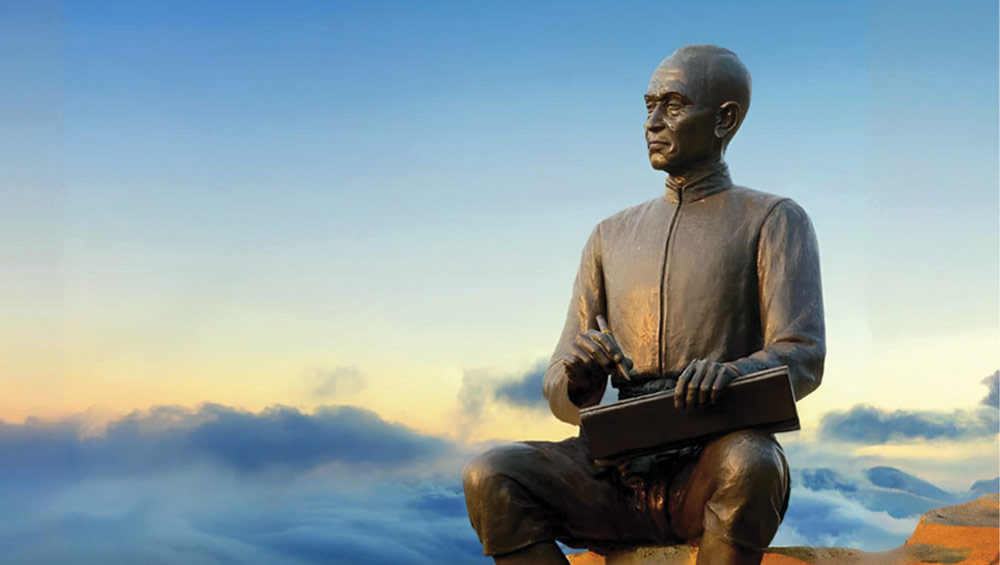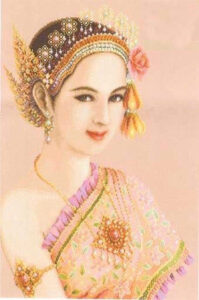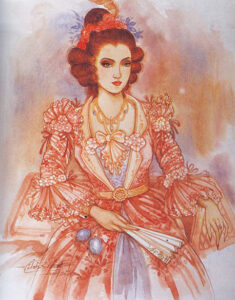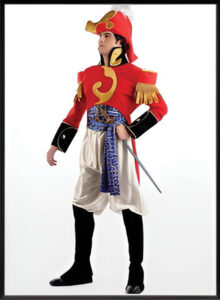Thailands Famous Epic Poetry Composed by Sunthorn Phu

Chapter 4: The Story of Phraaphimanee – final Chapter
As well as the chapters in previous issues, there are multiple story timelines in this epic poem. As well as Phra Aphaimanee there was Sisuwan, his younger brother, who was lost from Aphaimanee when the sea monster kidnapped him. After awakening from a deep sleep by Aphaimanee’s magic pipe blowing, Sisuwan searched for his brother. He went on a trip to Romanchak, the Kingdom of King Tossawong. It was during a time of war against King Utain who wanted to marry his daughter, Princess Kaew Kesara. She objected to marrying him and Sisuwan volunteered to fight for her father. Finally, he won the battle and married Princess Kaew Kesara and they had a daughter named Princess Arunrassamee.
previous issues, there are multiple story timelines in this epic poem. As well as Phra Aphaimanee there was Sisuwan, his younger brother, who was lost from Aphaimanee when the sea monster kidnapped him. After awakening from a deep sleep by Aphaimanee’s magic pipe blowing, Sisuwan searched for his brother. He went on a trip to Romanchak, the Kingdom of King Tossawong. It was during a time of war against King Utain who wanted to marry his daughter, Princess Kaew Kesara. She objected to marrying him and Sisuwan volunteered to fight for her father. Finally, he won the battle and married Princess Kaew Kesara and they had a daughter named Princess Arunrassamee.
 Sudsakorn, who lived with the hermit after Aphaimanee and Sinsamut left him, accompanied Princess Suwanmalee on board the ship heading to her hometown. Sudsakorn had learned magic science from the hermit and was exceptionally fast to grow up. At only 3 years of age, he left the hermit to find his father with a magic wand, riding on a dragon horse. He was attacked by bad spirits and after being pushed by a nudist fell into an abyss. But with the help of the hermit, he was saved. The hermit taught him not to trust anybody again. Sudsakorn went on to the Karawek kingdom where the King admired and adored him as a son.
Sudsakorn, who lived with the hermit after Aphaimanee and Sinsamut left him, accompanied Princess Suwanmalee on board the ship heading to her hometown. Sudsakorn had learned magic science from the hermit and was exceptionally fast to grow up. At only 3 years of age, he left the hermit to find his father with a magic wand, riding on a dragon horse. He was attacked by bad spirits and after being pushed by a nudist fell into an abyss. But with the help of the hermit, he was saved. The hermit taught him not to trust anybody again. Sudsakorn went on to the Karawek kingdom where the King admired and adored him as a son.
Usarain went back to Farang Lanka Kingdom but got extremely angry which caused his death. Princess Laweng Walla, his younger sister, took revenge for her brother by getting all her allies to make war with the Paluek Kingdom.
She convinced them by using a magic charm in her portraits. These were distributed to her allies and also Aphaimanee, Sisuwan, Sinsamut, Sudsakorn. The magic charm residing in her portraits made all of them obsessed; they got stuck and didn’t attack. But the hermit came back and destroyed all the magic. So that finally Prince Aphimanee, Prince Sisuwan and Sinsamut were able to go back to their hometown and attend their father the King’s funeral.
a magic charm in her portraits. These were distributed to her allies and also Aphaimanee, Sisuwan, Sinsamut, Sudsakorn. The magic charm residing in her portraits made all of them obsessed; they got stuck and didn’t attack. But the hermit came back and destroyed all the magic. So that finally Prince Aphimanee, Prince Sisuwan and Sinsamut were able to go back to their hometown and attend their father the King’s funeral.
The Source of Sunthorn Phu’s inspiration for his Phra Aphaimanee Classic is Samed Island in Rayong which in his story is referred to as Kaew Pissadan or The Hermit Island. This is why you see many statues on the island depicting the characters in his tale. It’s also interesting to note his use of Farang Lanka to describe a Kingdom in his story. Farang is a word in Thai used to describe European or Caucasian people. At the time of the story’s setting the people here would have been Sinhalese (natives of Sri Lanka). However, Sunthorn Phu refers to them with the Farang word because of the later colonisation of this island by the British when it was known as Ceylon.
